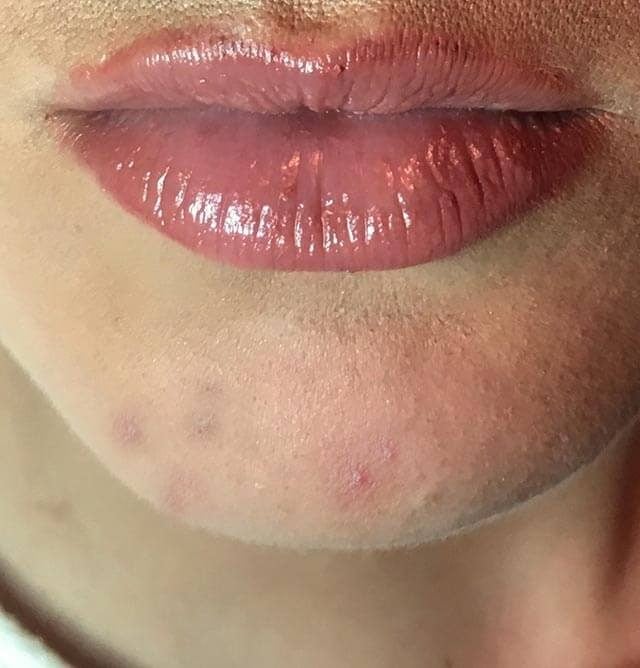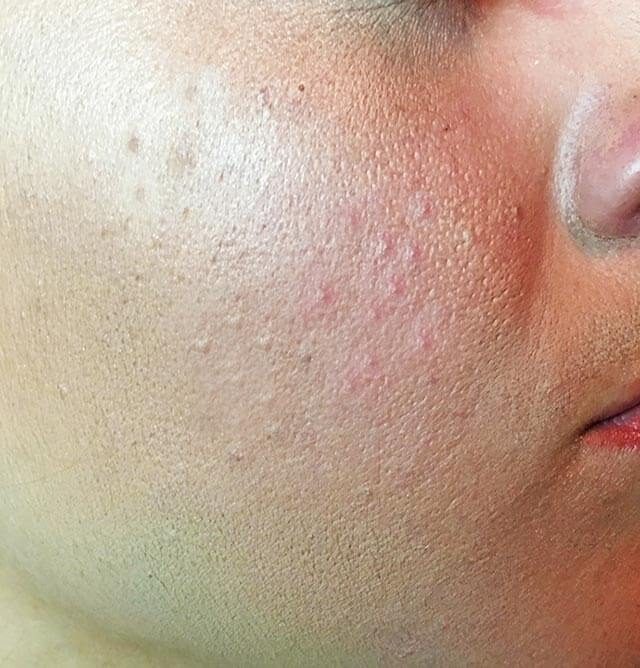The surprising state of safety in the United States
Accidental injury is the third leading cause of death in the United States. According to the National Safety Council (NSC), someone is accidentally injured every second and killed every three minutes by preventable incidents, including drug overdoses, car crashes, falls, and drownings. While you can’t eliminate all risk from your life, sometimes the simplest things can make the biggest difference. “Being aware and proactive can help prevent injuries and save lives,” says Kelly Nantel, vice president of communications and advocacy for the NSC. A few easy steps you can take to reduce your risk of an accident that Nantel suggests are buckling up on each and every car ride, clearing out medicine cabinets of unused or expired medication, and making sure your home is clear of tripping hazards. You’ll also want to keep an eye out for these 11 sneaky backyard dangers.
More than 40,000 people have died in car crashes each year for the last three consecutive years
The yearly death toll is also 14 percent higher than it was just four years ago, per the NSC, and Florida, Hawaii, Minnesota, Pennsylvania, and Washington, D.C., are among the states that reported a 5.8 percent increase in fatalities in 2018. Of course, there can be other types of casualties when an accident happens: Approximately 4.5 million people were also seriously injured in crashes last year alone. To stay safe on the road, check out these 10 scary driving scenarios and exactly how to handle them.

Distracted driving kills approximately 9 people—and injures more than 1,000—every day
Any sort of distraction—whether it’s your cell phone or a screaming toddler in the backseat—can be a problem, as this statistic from the U.S. Centers for Disease Control and Prevention (CDC) illustrates. “There is really no such thing as multitasking: Any additional cognitive load comes at additional demand to the brain, and you pay for that,” explains Federico Vaca, MD, a Yale Medicine emergency medicine doctor who is the vice chair of faculty affairs for the Emergency Medical Department and the director of the Developmental Neurocognitive Driving Simulation Research Center (DrivSim Lab). “Basically, when you pay attention to something else, you’re paying less attention to the thing you were doing.” That’s particularly problematic on the highway, he adds, when you can take your eyes off the road for only two to three seconds before you run into some serious issues.
You have a greater chance of dying from an opioid overdose than in a car crash
This is one of 2019’s most staggering statistics: You now have a one in 96 chance of dying from an opioid overdose versus a one in 103 chance of dying in a car accident. That number has risen dramatically over the last 20 years, according to Nantel—up 633 percent since 1999—and fentanyl, fentanyl analogs, and tramadol are the drugs most often responsible for these deaths. While this epidemic needs to be combatted in a variety of ways, you can take measures to protect yourself: “Individuals must feel empowered to serve as their own best health-care advocate,” Nantel says. “They need to ask questions when they are being prescribed pain-relieving medication, such as, ‘Am I being prescribed an opioid?’ and, ‘If so, is there a non-addictive alternative?'”
More than 250 people died while taking selfies between 2011 and 2018
That desire to get the perfect shot can be deadly, according to research published in the Journal of Family Medicine and Primary Care. Of the 259 selfie-related fatalities that occurred between October 2011 and November 2017, the mean age of the victims was around 23 years old and the majority were male (72.5 percent). The deaths—often by drowning, falls and vehicular accidents—occurred most frequently in India, Russia, Pakistan, and the United States. “People live and die by social media—literally, with bullying, taking different challenges with social-media games…and with these crazy pictures,” says Dr. Vaca. “But there’s no picture that’s worth your life.” Unfortunately, this problem likely isn’t abating anytime soon as social media continues to be an obsession. Experts are pushing for “no selfie” signs in certain locations, and certain locations have specific safety recommendations: The U.S. Forest Service, for instance, warns against taking selfies with bears in the background, and Yellowstone National Park has created a list of dangerous selfie spots to avoid.
Workplace injuries occur every seven seconds
Here’s another way to wrap your brain around that crazy number: If a worker is hurt every seven seconds, that translates to 510 injuries per hour, 12,600 per day, and 4.6 million per year, according to the NSC. In 2017, those injuries resulted in 104 million lost work days. The top three issues are overexertion (33.54 percent), injuries resulting from objects and equipment (26 percent), and slips, trips, and falls (25.8 percent).
Police chases kill nearly one person every day—and half of the victims are innocent bystanders
In the pursuit of justice, other people can become casualties. Between 1979 and 2013, more than 11,506 people, which includes around 6,300 fleeing suspects and 5,000 bystanders and passengers in the chased cars, were killed during high-speed car chases, according to a USA Today analysis of National Highway Traffic Safety Administration statistics. Plus, more than 270,000 people are estimated to have been injured during that period, or 7,400 people per year. Perhaps even more shocking, most of these chases occurred after minor infractions, usually traffic violations or misdemeanors.
Drowning kills more children between the ages of 1 and 4 than anything except birth defects
Drowning is the second leading cause of unintentional injury death among children ages 1 to 14, according to the CDC, and drowning incidences are highest among children under five and young adults between 15 and 24. The thing is, drowning often doesn’t look like it does in the movies, so people can be slow to realize what’s happening. “With children, there will be very little noise: They can fall in and don’t know how to tread the water, so they just go under,” says Dr. Vaca. “And if they scream, they suck water into their lungs.” He adds that you should be hyper-vigilant when children are around water because you have mere minutes before a lack of oxygen can irreparably damage the brain. Of course, drowning can happen to anyone: Overall, approximately 4,000 people drown each year, and the overwhelming majority of victims are male (80 percent). Brush up on these 12 water safety tips that adults don’t follow—but should.

You have a one in 3,748,067 chance of being killed by a shark
Translation: The likelihood that you’ll be attacked by a shark is very, very, very low. In fact, according to the International Shark File and the NSC, you have a much greater chance of dying from the flu (1 in 63), a bike accident (1 in 4,919), or being struck by lightning (1 in 79,746). Of the 130 shark-related incidents worldwide in 2018, there were only 32 unprovoked incidents in the United States and one subsequent fatality. While that fatality occurred in Massachusetts, Florida consistently ranks as the place with the most attacks in the world. To lessen your chances of being attacked, don’t wear brightly colored swimsuits and shiny jewelry, stay in groups, avoid the areas between sandbars and deep drop-offs, and don’t swim in the dark or in twilight hours when sharks are particularly active.
Approximately 19,000 people head to the ER each year due to grill-related injuries
According to data reported by the National Fire Protection Association between 2013 and 2017, nearly half of those injuries were from thermal burns and children under five made up 38 percent of those hurt. But that’s only part of the story: Home fires are also a very real risk when grilling. During that same period, fire departments reported 10,200 fires each year that involved grills, hibachis, or barbecues. Gas grills were involved in around 8,700 home fires per year, often due to leaks or breaks, while charcoal grills and the like caused around 1,100 home fires. That resulted in 10 civilian deaths, 160 civilian injuries and $123 million in property damage. Here are 50 other summer health dangers you’re probably ignoring.
Seventy-seven percent of Americans think that home is the safest place to be…but that’s where 75 percent of preventable accidents actually take place
The world seems like a big, scary, unpredictable place, and, in fact, the NSC found that an overwhelming majority of people are most fearful of things that will likely never happen to them, such as murder (80 percent). But the reality is that most accidents happen at home or close to home. While everything from falls and fires to choking and drowning incidents can take people by surprise, opioid overdoses also factor into the equation—and the rising number of preventable deaths.
Playground injuries send more than 200,000 children under 14 to the hospital each year
Bumps and bruises might be expected when children are set free in the relatively safe confines of a playground, but this fun zone can quickly turn into a danger zone. According to the Consumer Product Safety Commission (CPSC), more than 20,000 of the 200,000-plus children who need medical attention after a trip to the playground are treated for traumatic brain injuries like concussions. Other issues include scalding slides, little legs that get caught and broken while heading down a slide (often when going down with an adult), and heat illnesses. But you don’t have to be a helicopter parent to keep your kids safe—you just need to be aware of certain dangers. “Check for hazards, such as improper ground surfaces, overcrowded play areas, and sharp points and edges,” says Nantel. “In addition, children should not play with—or wear—anything that could get on playground equipment and be a strangulation hazard.”
A violent crime occurs every 24.6 seconds
According to the FBI’s Crime Clock for 2017, that included a murder every 30.5 minutes, a rape every 3.9 minutes, and a robbery every 1.7 minutes. Property crimes occurred even more frequently—every 4.1 seconds, with burglaries happening every 22.6 seconds. Some other important facts: Burglaries most often happen between 10 a.m. and 3 p.m., and 34 percent of burglars get in through the front door, according to Safety.com. A little deterrence goes a long way, so make sure to lock windows and doors, reinforce weak entry points, use motion-sensing lights, and, if your budget permits, install a home security system. You’ll also want to follow these 13 safety tips that could save your home from a break-in.

Around 1,301 people will die this year from hypothermia
That’s the yearly average of the 16,911 hypothermia-related deaths that occurred between 1999 and 2011, per the CDC. In the winter, make sure to heed warnings about polar vortexes and other extreme weather. According to Live Science, hypothermia can set in as quickly as ten minutes at minus 30 degrees if you’re not bundled up properly. And an FYI: When your body is wet, it loses heat more quickly—and you can experience hypothermia in as little as ten minutes in 41-degree waters. You aren’t safe in warm water either: Scientific American reports that someone who’s in 75-degree water for an extended period of time can also develop hypothermia. When you’re exposed to the elements, you’ll definitely want to know these surprising signs of hypothermia that are too easy to miss.
More than a quarter of a million children incurred serious injuries from toys in 2017
These injuries were severe enough to send families to the emergency room, according to the CPSC, though 95 percent of those children were treated and released. Nearly half of those injuries were to the head, face, and eyes. There were far fewer toy-related fatalities: 13, to be exact, of which riding toys were associated with seven (54 percent).
Approximately one in 25 patients in a health-care facility has a secondary infection resulting from a stay in that health-care facility
Hospitals and other health-care institutions are supposed to make you better, not add to your health problems, but the Office of Disease Prevention and Health Promotion warns that’s exactly what can happen. When people are being treated for one issue, many will also contract a healthcare-associated infection (HAI), such as MRSA, pneumonia, surgical-site infections, urinary tract infections or central-line bloodstream infections, to name a few. Surgical patients or those who need catheters or injections are at greater risk, and facilities that aren’t properly disinfected and the overuse or improper use of antibiotics can also be hazardous to your health. Worried? Read these 34 ways to survive your next trip to the hospital.
The post 15 of the Most Shocking Safety Statistics appeared first on Reader's Digest.
from Reader's Digest http://bit.ly/307wXOm
15 of the Most Shocking Safety Statistics Reader's Digest










 “When dieting, many people will adopt restrictive language that leaves the mind wanting what we cannot have,” says New York City neuropsychologist Dr. Sanam Hafeez. “By saying ‘I can’t have donuts, I am dieting,’ we wire our mentality to yearn for that which we cannot have.” Saying this instead of “I can’t” may make all the difference when you’re trying to give up an unhealthy habit, according to a study in the
“When dieting, many people will adopt restrictive language that leaves the mind wanting what we cannot have,” says New York City neuropsychologist Dr. Sanam Hafeez. “By saying ‘I can’t have donuts, I am dieting,’ we wire our mentality to yearn for that which we cannot have.” Saying this instead of “I can’t” may make all the difference when you’re trying to give up an unhealthy habit, according to a study in the 







